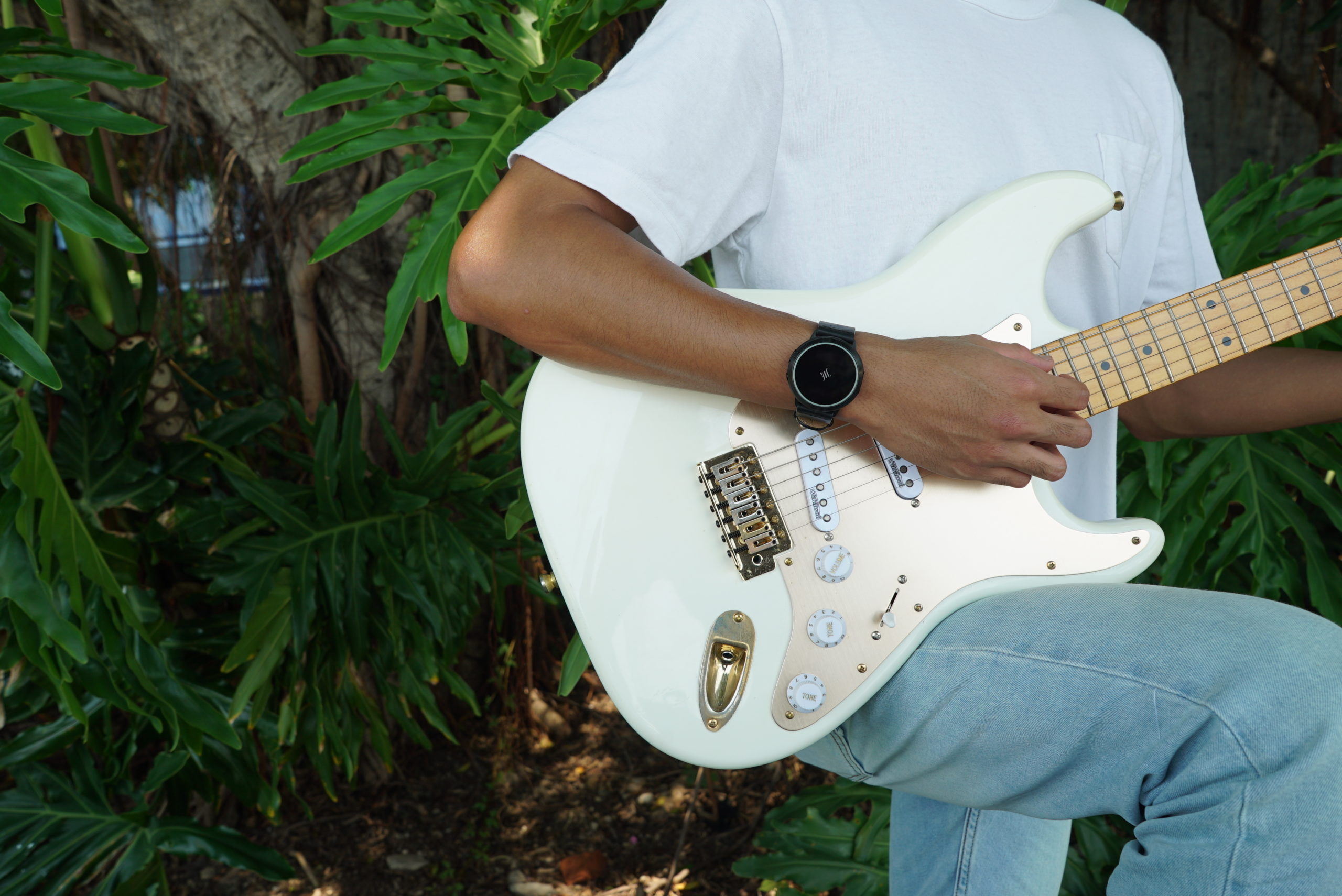
Deciding between an acoustic or electric guitar is a choice that’ll differ from artist to artist, there is no default setting here. You’re the one calling the tune here, and understanding the differences between the two will help you choose the instrument right for you.
It’s vital to choose a guitar that strikes the right chord, both with your personality and in your instrument. That’s the type of instrument that’ll have you channeling your inner Jimmy Page!
Now both types actually have more similarities than differences. So you can switch your instrument of choice down the road if it doesn’t suit you. The techniques for playing both instruments are comparable as well. In fact, the main differentiator between them is their sound and appearance.
How a guitar feels in your lap and the way your fingers hit each string will inherently impact your choice. While these differences may feel trivial now, they’ll affect your long-term comfort level and your relationship with your music.
Acoustic or electric guitars with nylon strings both have a similar level of difficulty. Steel-string acoustic guitars are generally considered more difficult for new learners.
Acoustic guitars can be easily picked up and played on the go. Electric guitars, though slimmer and lighter than their classical counterparts, require cables, cords, an amplifier, and an electronic connection to be played. Electrical guitar strings are usually easier on the fingers for new learners. Acoustic guitars have wooden bodies to sustain the tension of denser strings.

Electronic guitars offer more choices of size and color. An important feature for artists who want a more artistically impressive tool of choice. Acoustic guitars can seem larger yet offer better mobility. The lap feel of an acoustic guitar is quite different from that of an electric guitar while playing.
Another key factor to consider is pricing. Electronic guitars can cost a lot more than acoustic guitars and require more additional accessories as well. Check out these affordable options perfect for new learners.
You will need to properly adjust and tune both types of guitars to perform their best. While they might feel different when you play, the way to tune them is quite similar. New learners should learn the basic tuning of their instruments for optimal sound quality.
It’s better to learn to play the type of guitar that resonates best with your personal music style. If you’ve always envisioned yourself sitting around the campfire, playing a country song in a deep, soulful vibe, an electronic guitar might be harder to power in the wilderness (no matter how easy to learn or aesthetically pleasing it might seem).
A simple rule of thumb here is that if an instrument is incompatible with your music style, then learning it won’t be as fruitful, no matter what other plus points it might offer. Electronic guitars offer a more expansive array of sounds. Making lessons more fun and keeping younger learners interested. Acoustic guitars are perfect for bluegrass, classical, and country music.
Electronic guitars offer the option of volume control that acoustic guitars don’t have. Which might make it the better choice for budding artists practicing in apartments or residential areas. Play with the volume turned down low, or you could also protect your hearing with the Minuendo earplugs instead.
Whichever type of guitar you choose to learn, make sure you equip yourself with the right technology and tools to make the most of your jamming sessions. Download the Soundbrenner app now to access amazing resources on the go. Remember, practice makes perfect! To really amplify your guitar game, consider investing in gadgets like Core or Core Steel.
Thanks for reading our article on the differences between electric and acoustic guitar! We at Soundbrenner are dedicated to helping musicians stay focused on what truly matters: their music. By creating innovative devices, such as Soundbrenner Pulse and Core, our goal is to deliver the best possible practice experience for musicians. Click here to find out more.
Got a question about Soundbrenner wearables? Reach out to us at [email protected], we’re happy to help!